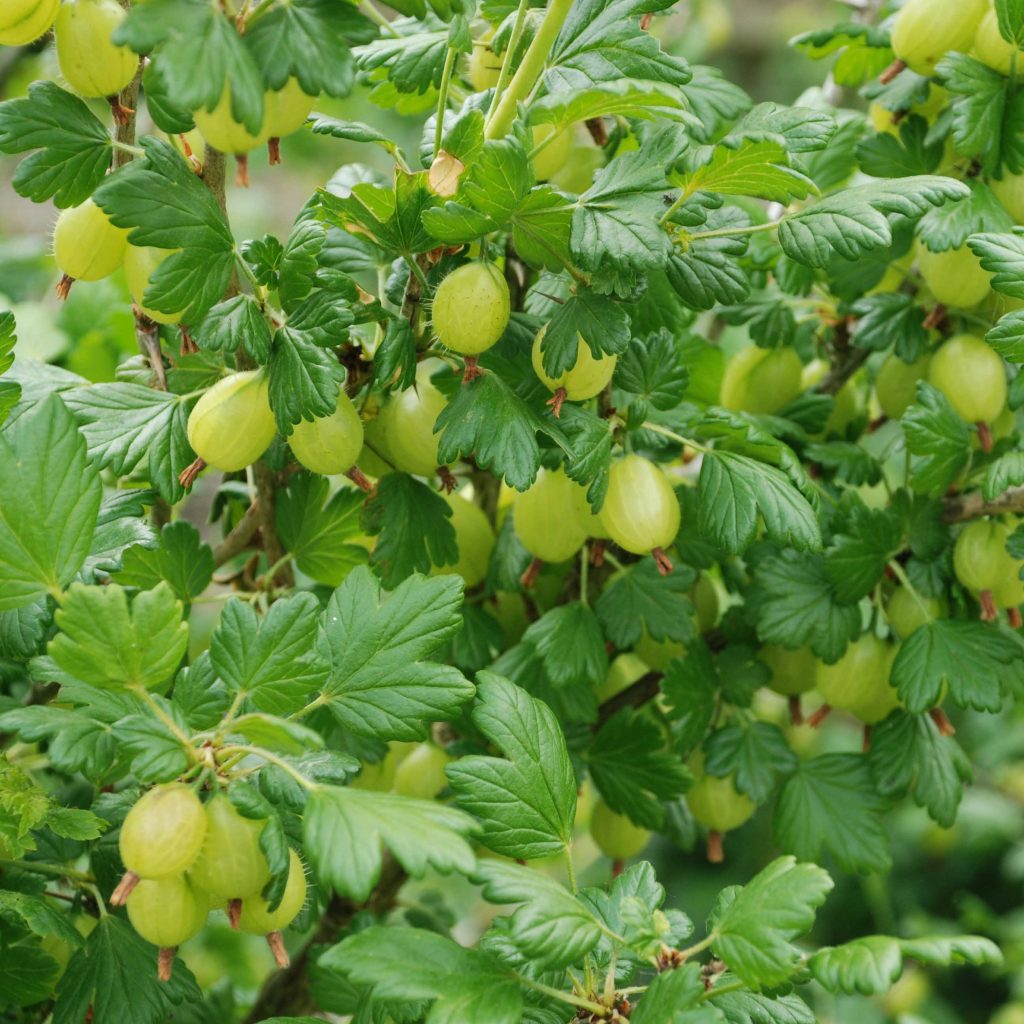No matter how hard they are pruned, my four gooseberry bushes never fail to supply me with an abundant crop during late June and early July.
 Gooseberries are good for jam when barely ripe and perfect for chutney when very ripe. Inevitably, I have more than I need and many find their way to a freezer.
Gooseberries are good for jam when barely ripe and perfect for chutney when very ripe. Inevitably, I have more than I need and many find their way to a freezer.
Recorded as a fruit grown in Edward 1’s Westminster garden, the gooseberry reached a peak of popularity during the nineteenth century, when they were used for making wine, desserts and preserves. In 1905, the entire European crop of gooseberries was wiped out by a mildew disease from America. New, mildew-resistant varieties were created with bushes producing fruit for many years. Popular varieties include Langley Gage, Leveller, Invicta and Greenfinch.
Over the years I have tried a number of gooseberry chutney recipes.The one I return to is sweet and spicy with heat from chillies. Here’s the recipe.
Hot Gooseberry Chutney
Makes around 2kg
1kg green gooseberries
300g onions
15g garlic
15g chillies
500g raisins
500g stoned dates
125g stem ginger
15ml salt
1 litre distilled malt vinegar
450g demerara sugar
1.Using a food processor, mince the gooseberries, onions and garlic or finely chop them by hand. Place these ingredients into a large preserving pan and add 200ml water. Cover the pan and cook very
gently until soft, about 10 minutes. Remove the lid.
2 Mince the raisins, dates and ginger and add them to the pan.Bruise the chillies with a rolling pin and tie them up in a muslin bag. Add it to the pan with the vinegar and salt. Bring the mixture slowly to the boil, then turn the heat down to a very gentle simmer. Cook until the contents of the pan have reduced to a pulpy consistency, stirring occasionally with a plastic or wooden spoon.
3. Add the sugar and dissolve it carefully. Continue to cook gently until the contents of the pan are thick and no “free” liquid remains. Stir frequently to prevent the chutney sticking to the bottom of the pan.
4. ![]() Lift the muslin with a spoon and press it against the side of the pan, squeezing any liquid back into the pan. Discard the bag. To test when the chutney is ready, draw your spoon through the centre of the mixture in the pan. If it leaves a trail, like a channel, without it filling up immediately with liquid, the chutney is ready for transferring to jars.
Lift the muslin with a spoon and press it against the side of the pan, squeezing any liquid back into the pan. Discard the bag. To test when the chutney is ready, draw your spoon through the centre of the mixture in the pan. If it leaves a trail, like a channel, without it filling up immediately with liquid, the chutney is ready for transferring to jars.
5. Ladle the chutney into a glass or plastic jug. Pour the chutney into warm clean jars,filling them to within 5mm from the top. Seal the jars with new, vinegar resistant twist top lids. Store in a dry cupboard for two to three months before opening to allow the chutney to mature.
For more Chutney Recipes First Preserves: Marmalades, Jams, Chutneys or First Preserves: Chutneys eBook
